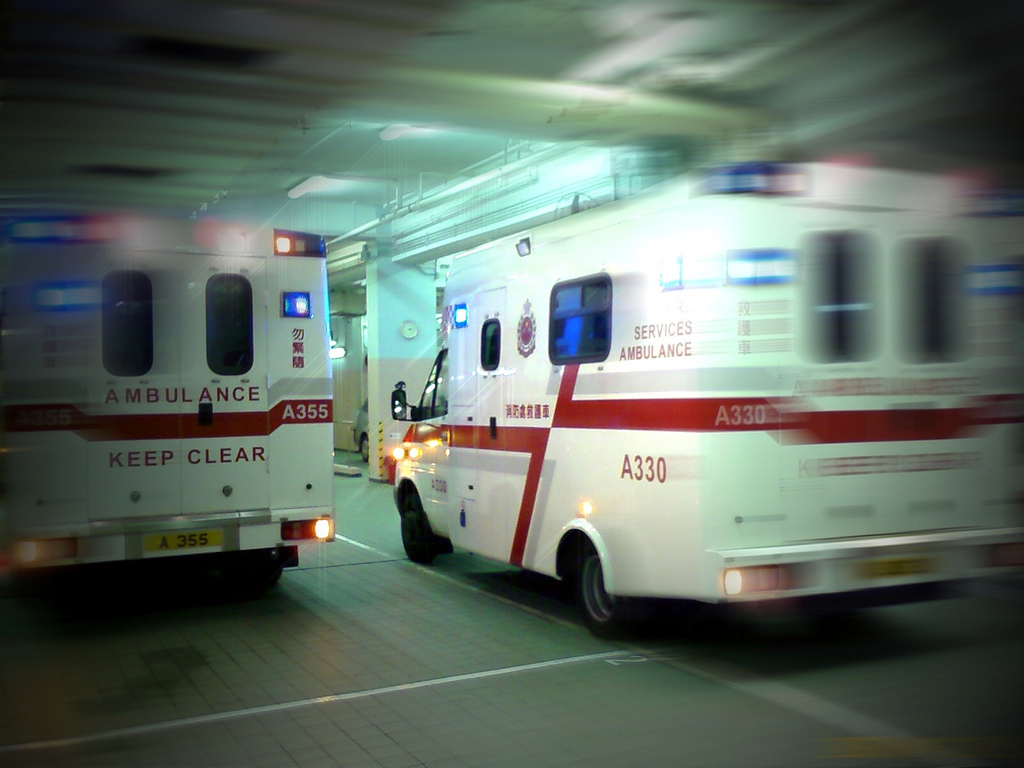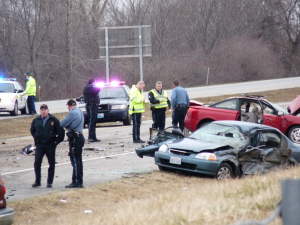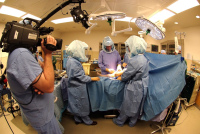Injuries from Motor Vehicle Accidents: What is a Trauma Center? Why Should I Care?
 Friday, March 25, 2011 at 12:32PM
Friday, March 25, 2011 at 12:32PM  Emergency Room, Chealion, FlickrWhere should I go?
Emergency Room, Chealion, FlickrWhere should I go?
When I had my motorcycle crash and received a severely broken leg, I had no idea that the hospital I had chosen to be taken to for treatment was a level IV trauma center. Nor was I aware that Washington State uses a 5 level rating system for the various hospitals/trauma centers associated with these hospitals. The trauma nurse and doctor at Northwest Hospital looked at my x-rays and discovered that they were going to stabilize me for transport and that would be about it. I was going to need much more surgical specialty personnel than was immediately available for them to muster. Oh, joy. Another ambulance ride.
The pain from being moved around for a dozen x-rays was getting to the point where medications alone weren't effective and it was time again for distractions and daydreaming - taking my brain away from the pain, like with the Shoreline paramedic talking with me about my once- beautiful bike (Grrrrr!). Yup, that worked and now that I know it will only work for a couple of minutes, I started thinking about trips my wife and I have taken - standing on the observation platform atop the Eiffel Tower in Paris, gaping at the Crown Jewels in the Tower of London, watching humpbacked whales in the Strait of Juan de Fuca ; the vivid, Technicolor type memories that are forever etched in your mind. Those memories are the ones that seem to work best to push pain down and away. I still felt it, but the pain was much more tolerable and allowed the medications to work better.
Trauma Center Ratings
Level V (5) is the lowest rating for a Washington trauma center and level I (1) is the highest. If you live in Washington, Idaho, Montana or Alaska and need a level I trauma center, you will be going where I wound up - Harborview Medical Center, Seattle, The State of Oregon has two level I trauma centers in Portland to help cover that state and SW Washington.
The trauma center with a level I rating is going to have 24/7 staffing and on-call availability of every specialty doctor, nurse, anesthesiologist, and technician that severely injured people might need, including burn and plastic surgeons.There will also be on-site most diagnostic and imaging devices these specialists will need to help fix you up. In my case, it was for the orthopedic surgeons. (Yay, HMC Green Team!) The centers with levels II, III, IV and V will triage patients, and if they can be stabilized, they will send them off to a higher level facility that will have necessary staff waiting or on the way when the transferred patient arrives by ambulance or helicopter. There are many rules of triage and transfer these trauma centers follow and these guidelines vary from state to state. Look up specifics for your state or states you're likely to travel through as part of a pre-trip planning guide. It could help steer you towards a better choice and eliminate unnecessary transferring. And unnecessary pain.
Triage at the Trauma Center - Three Days Without Food
One thing to keep in mind about trauma centers is that they are very busy places, indeed. The Friday I crashed was the day before the Seattle Seafair festivities began and man, was that hospital busy. Remember I mentioned triage?
If your condition is relatively stable or can wait for treatment, you will probably wait. Here's where the letting your mind wander technique can help, especially if you're bored with watching tv or there's no tube where you've been stashed. Once a code blue is called on your floor, you will have to wait for more pain meds until the emergency is over and your nurse is freed up. You may have to deal with the pain one on one, using the power to reduce pain your mind has built into it - you against the pain beast. Kick the beast where it hurts, but remember to stay calm, relaxed,centered, sitting on the beach or wherever it is you choose to go.
The nurses called it "getting bumped" or as I found out, no food for three days.
Each time I was scheduled for the first surgery to install an external fixator (lovely piece of equipment - Google it to see examples), someone more seriously injured would come to have their life saved. Usually. Not everyone who made in in survived. I didn't have anyone die next to me, but a temporary roomie did.
Once, I made it as far as having the surgeon initial my leg and have the sleepy-time guy go to get the good knockout drops when Nurse Killjoy came in again to bump me. No ill will towards those bumping me, but three days without food made me a little cranky. Seafair weekend in Seattle gets a lot of torn-up people into the hospital, and depending upon what is going on at the time you're ever admitted to a trauma center, be prepared to wait.
Distraction Pain Control
Practice a little distraction pain control at home before you really need it.
Practice controlling your breathing and breathe like an opera singer - slowly, from the diaphragm, up and down, not in and out. I got pretty good at it and found that I could slow my heart rate quite a bit and lower my blood pressure (being hooked up to monitors made it easy to quantify). You can learn how to do it, too, Use it to work on relaxing pain away a little at a time, one spot at a time.
Dave
Shoreline, WA



